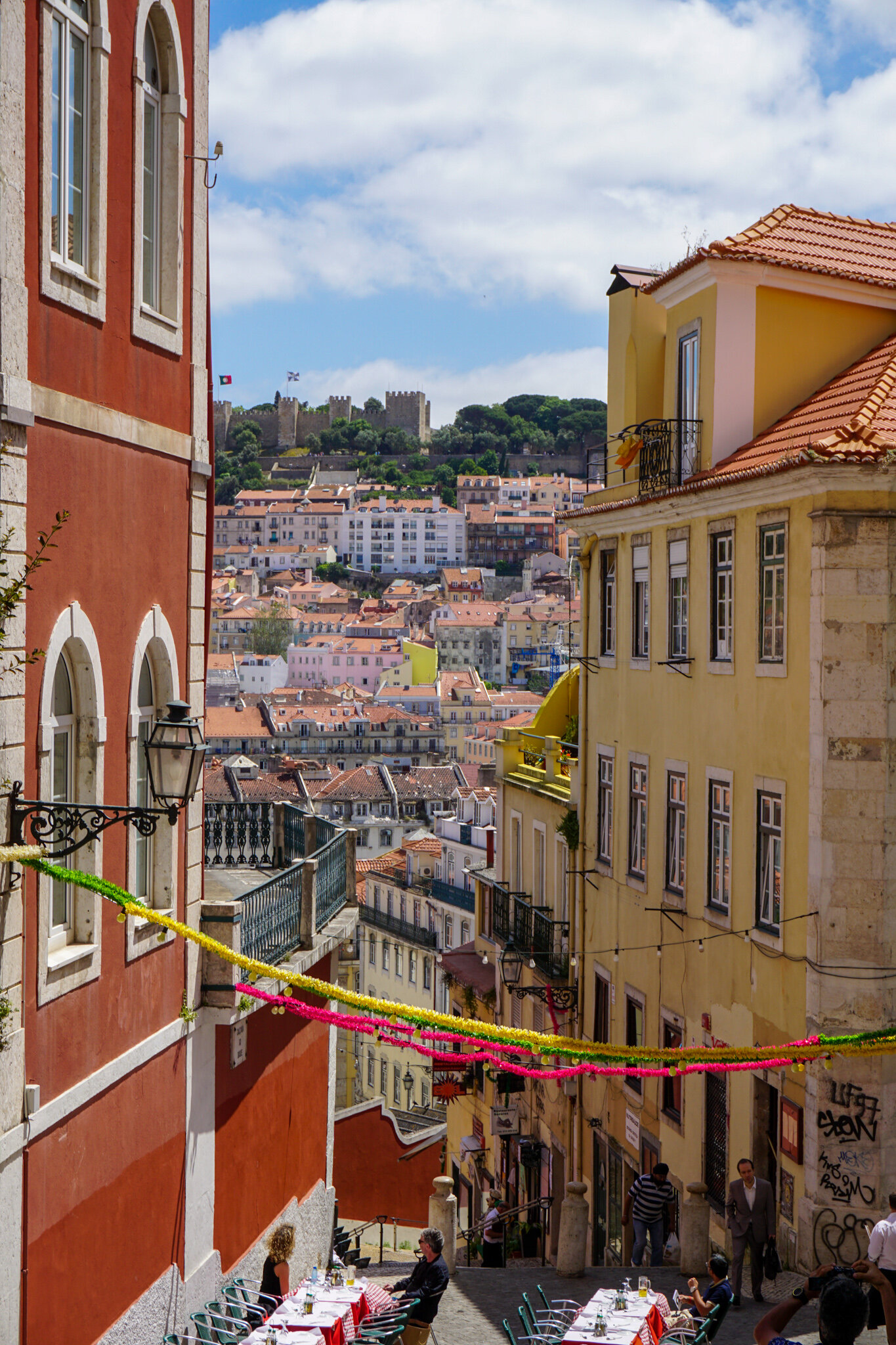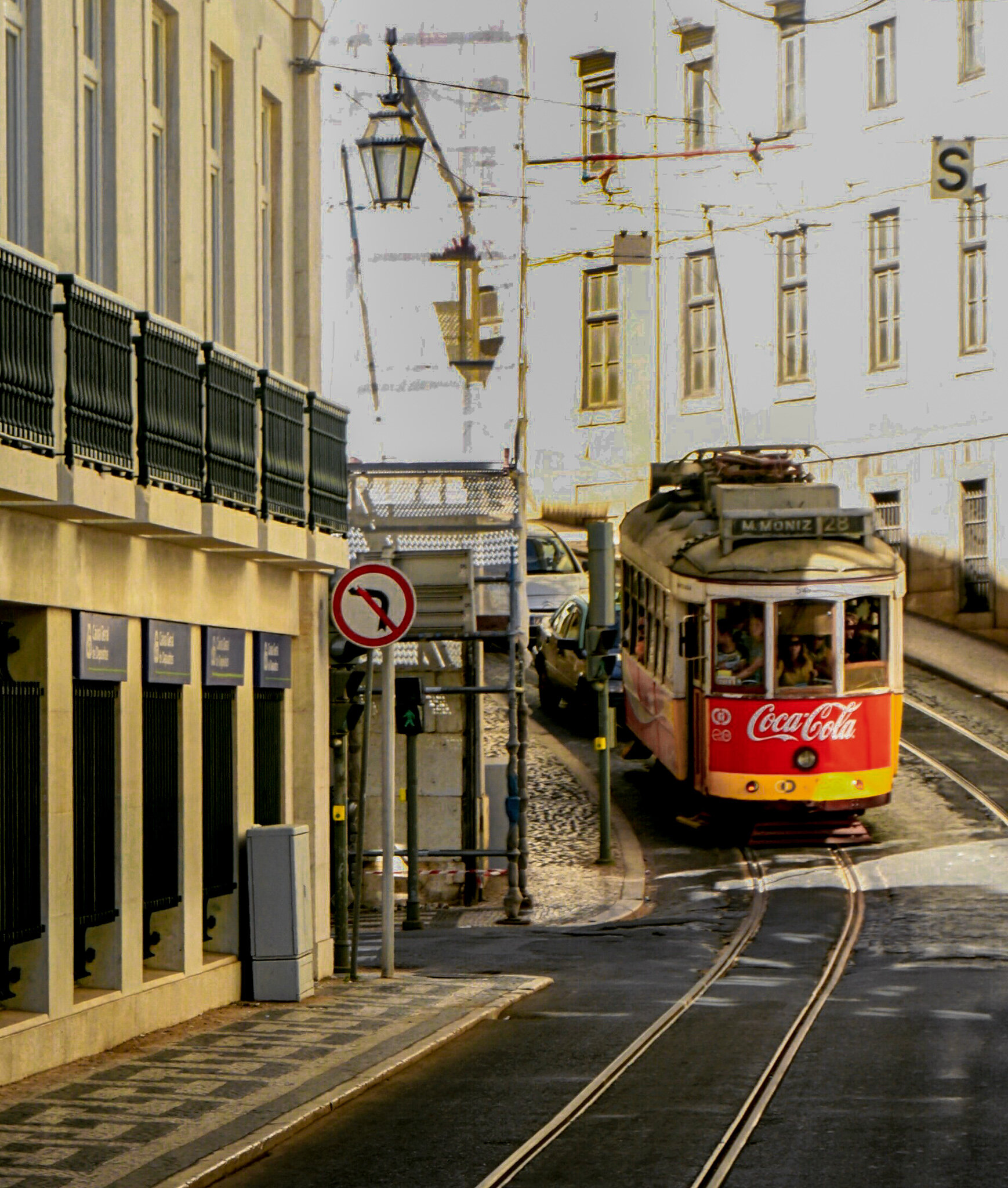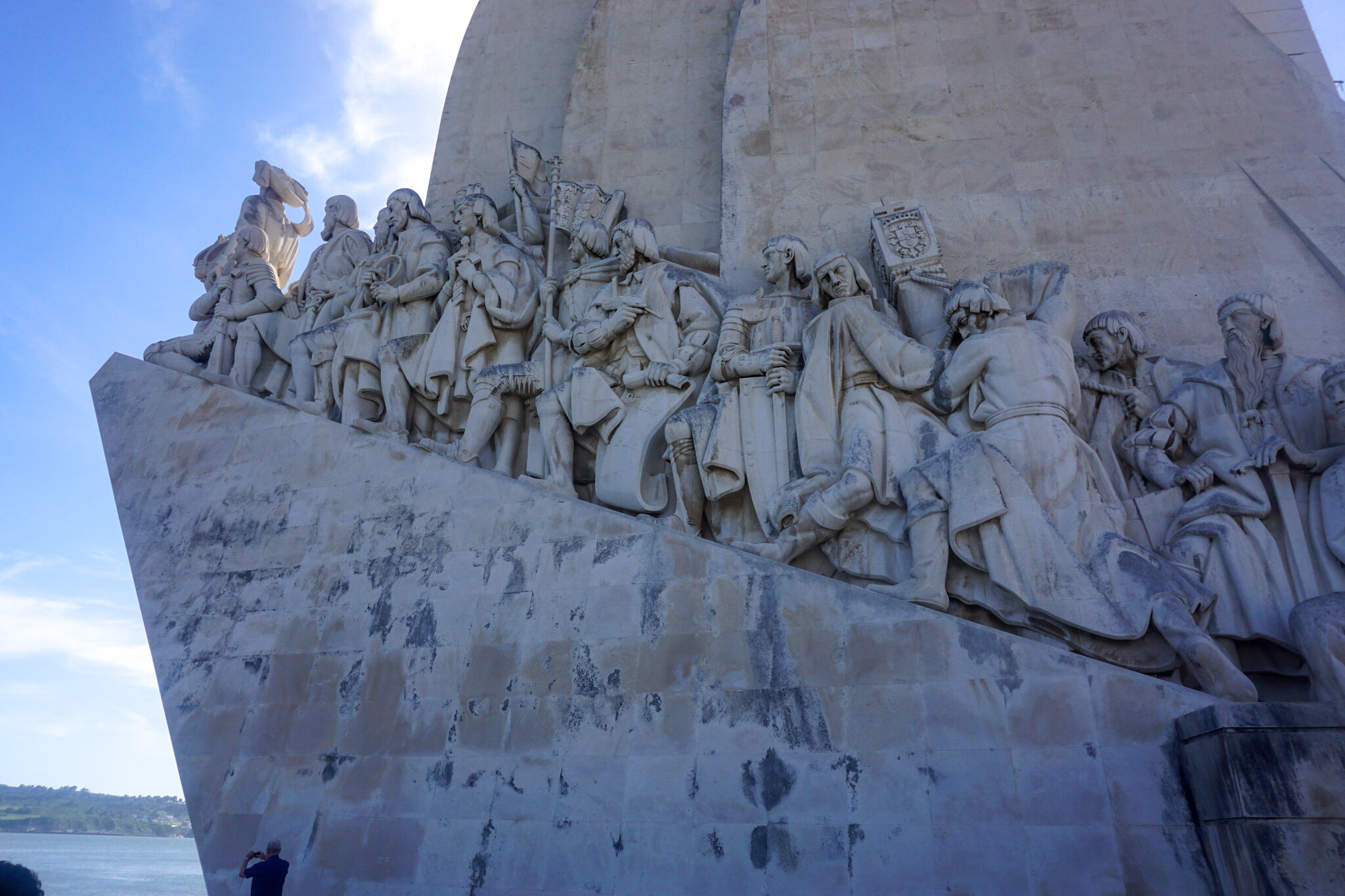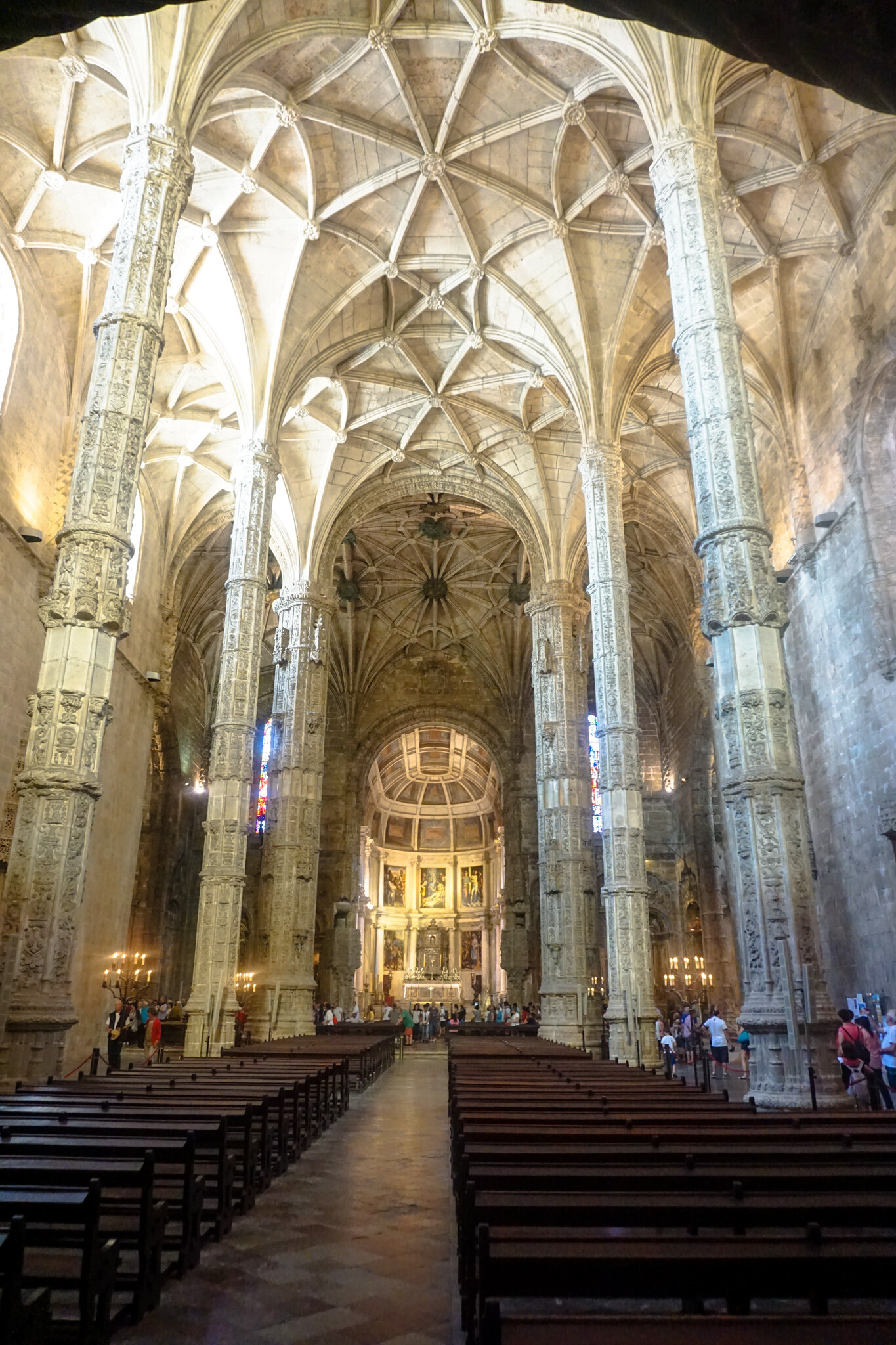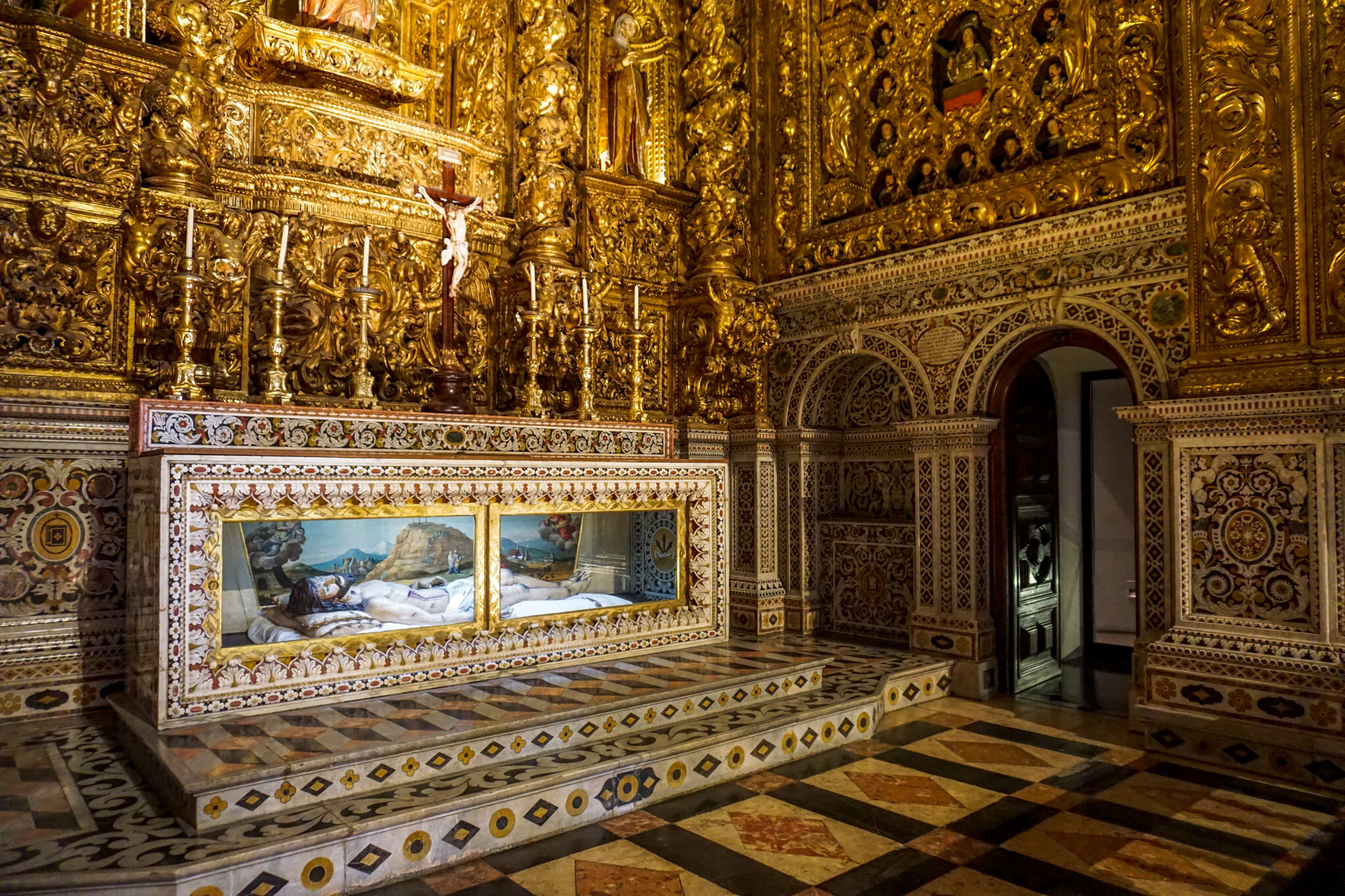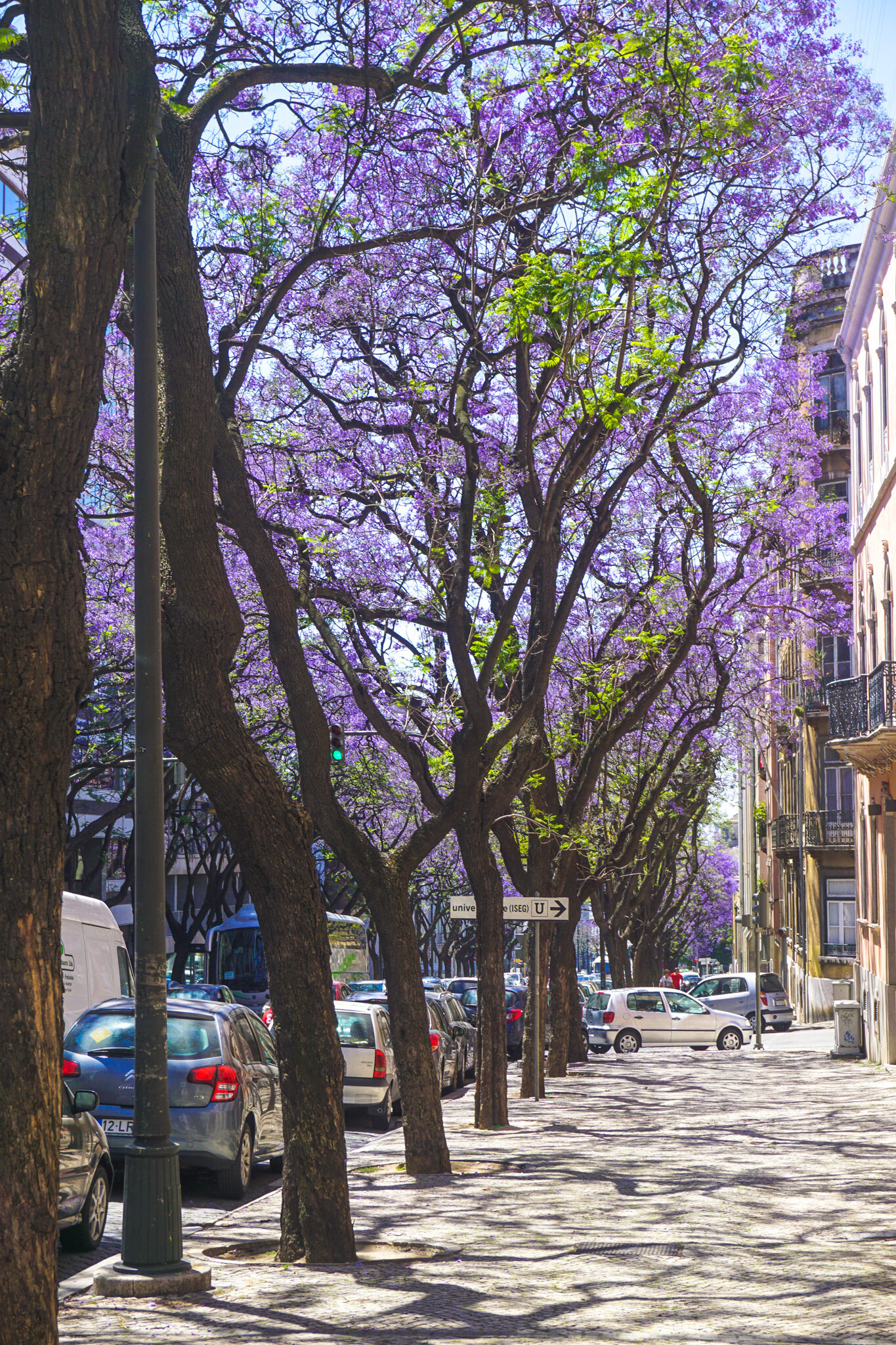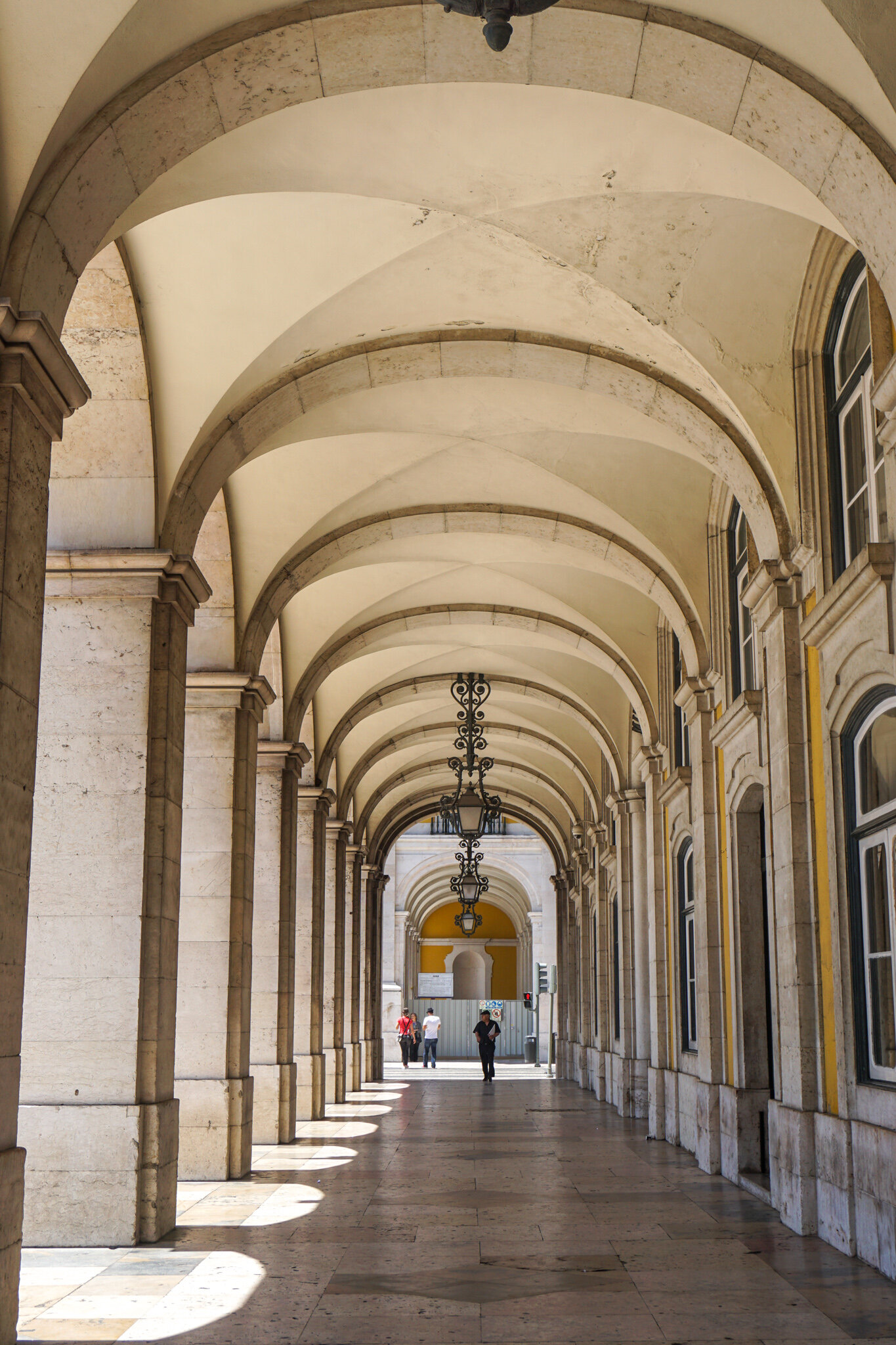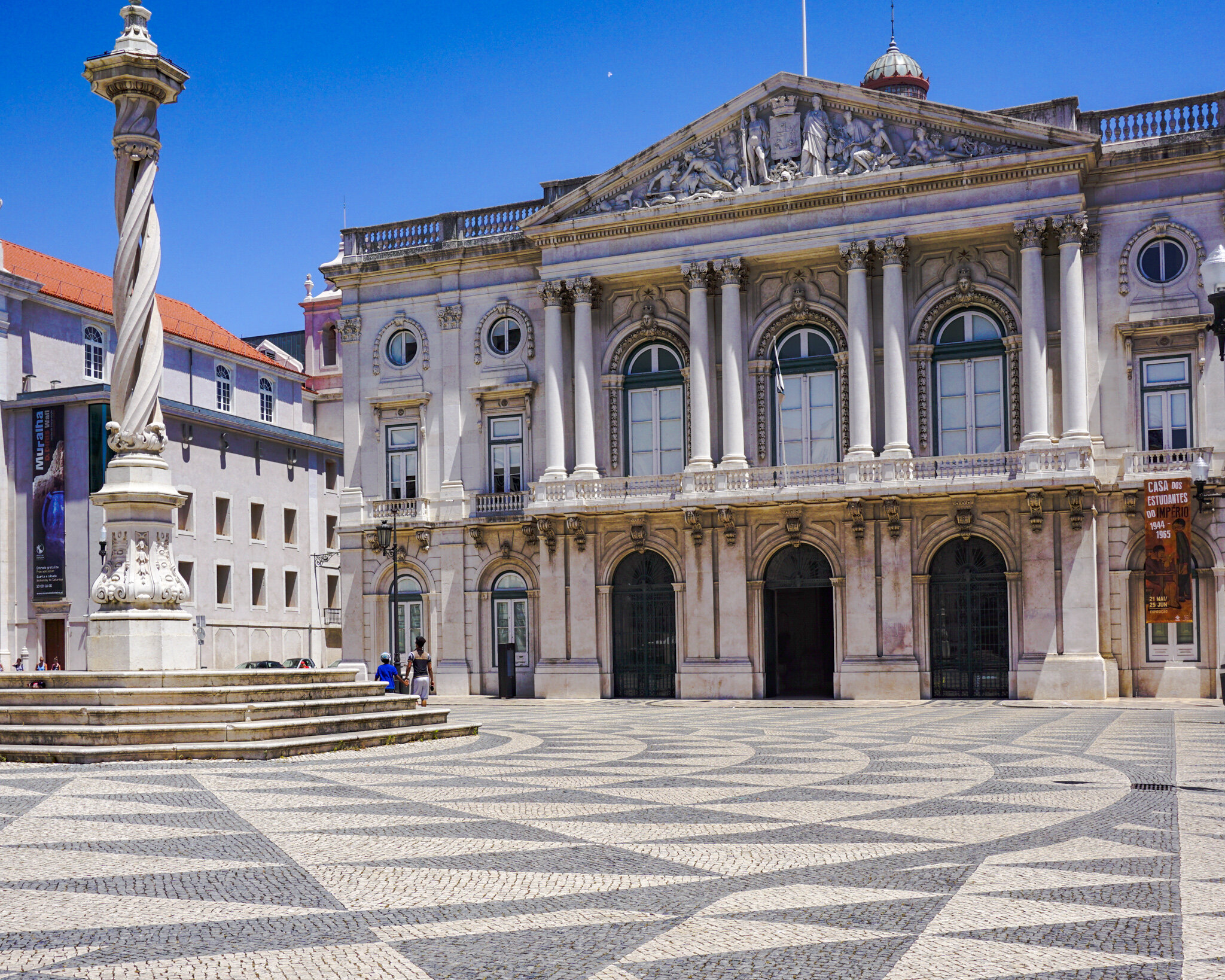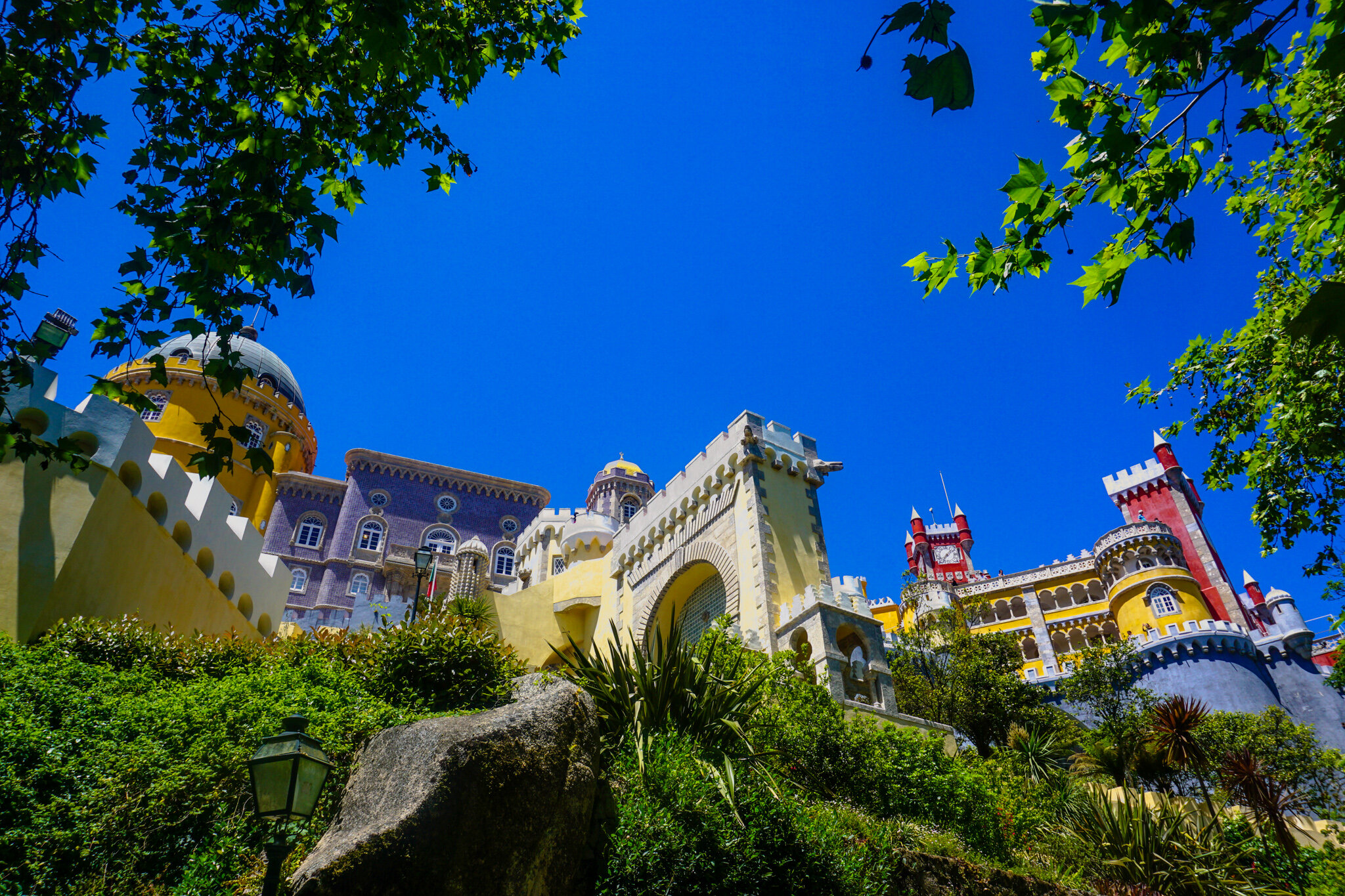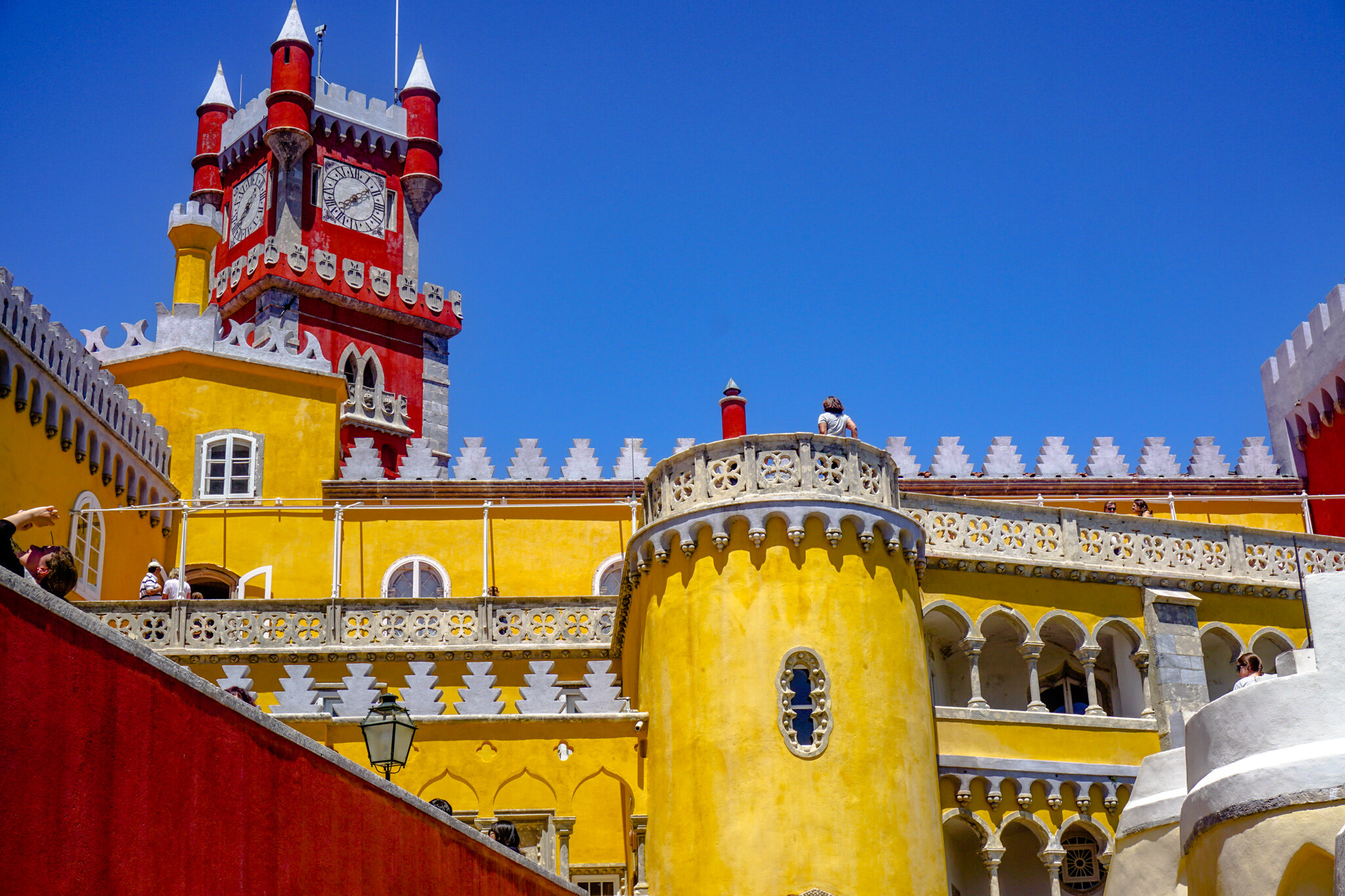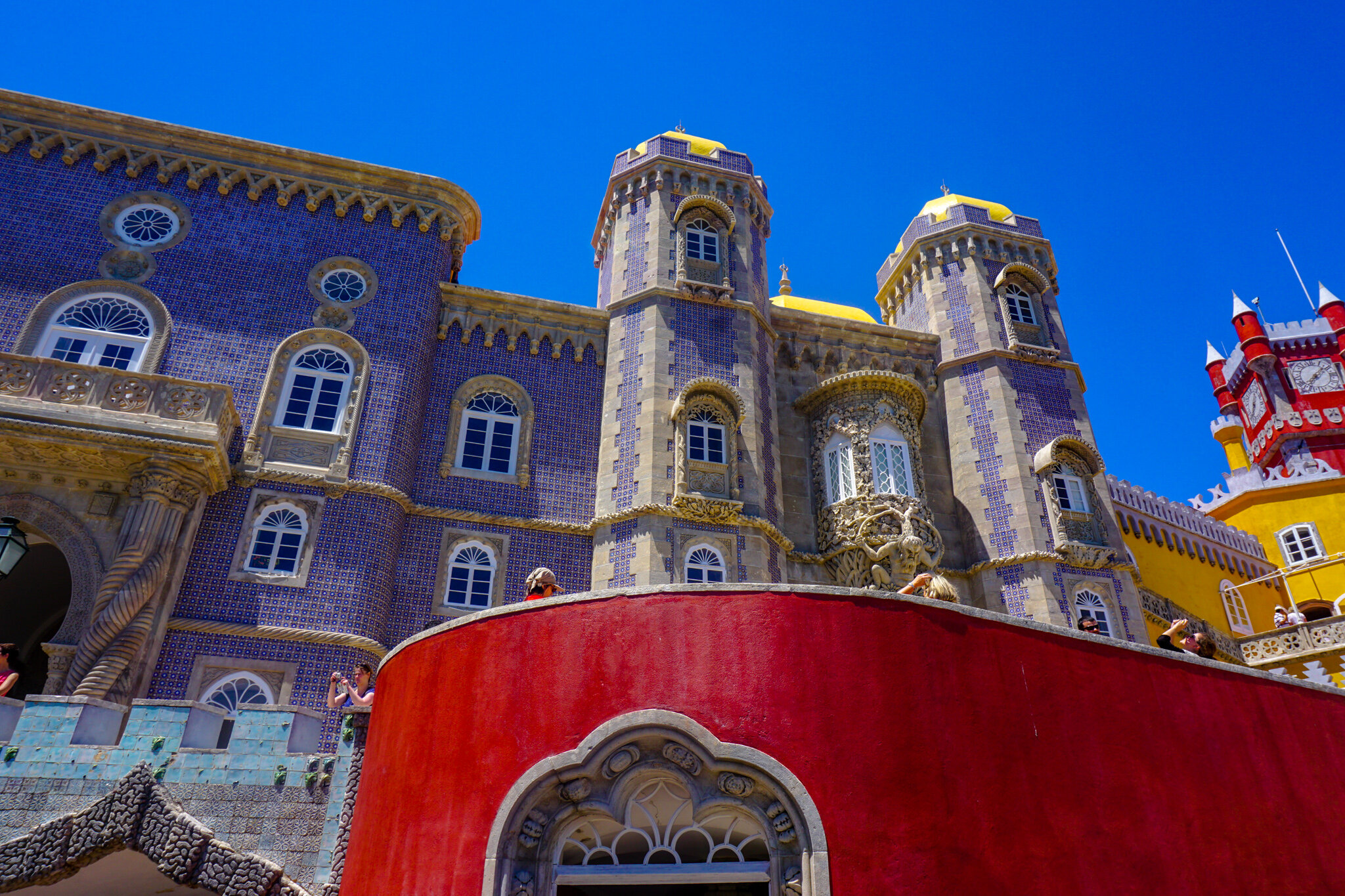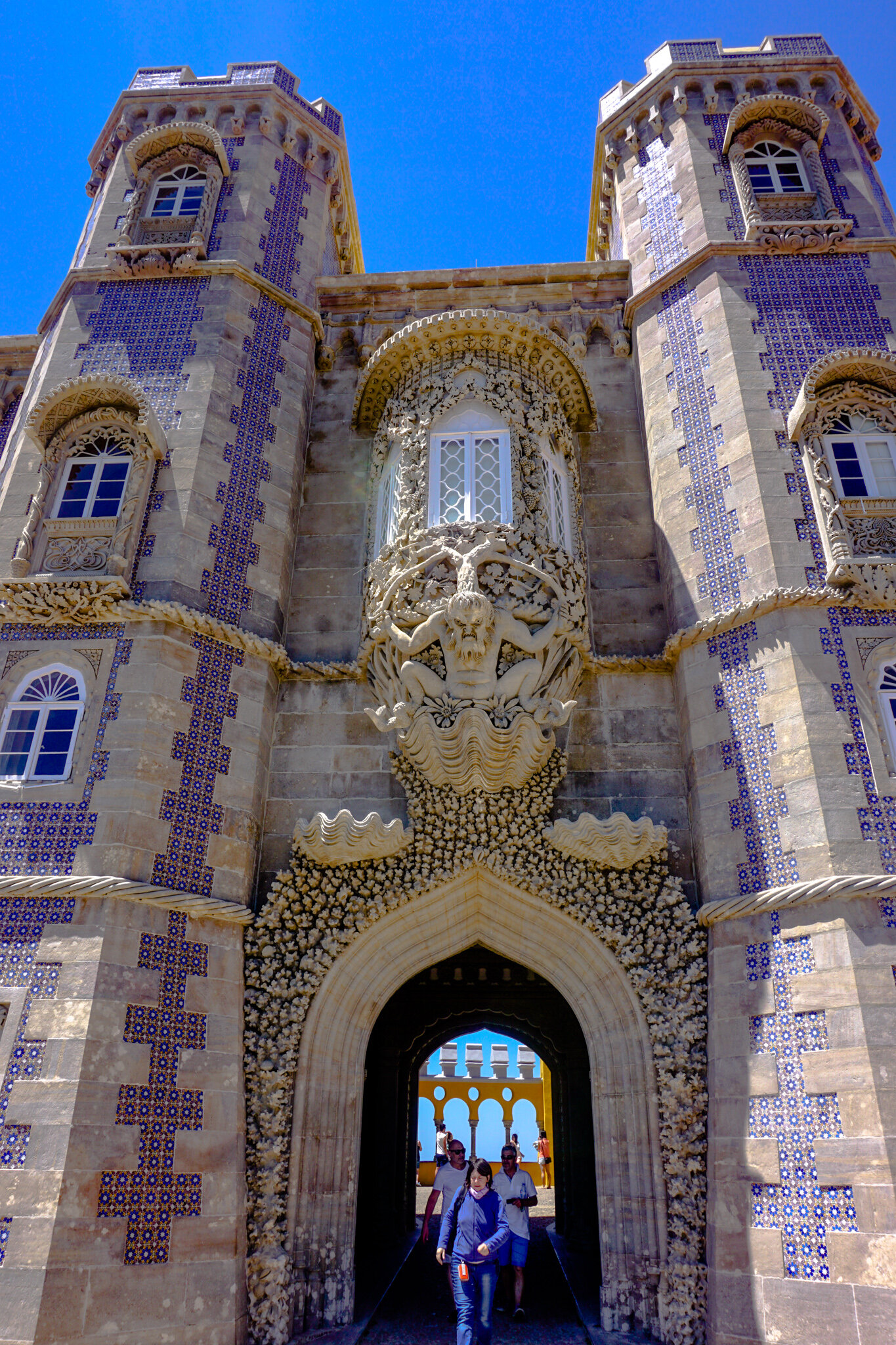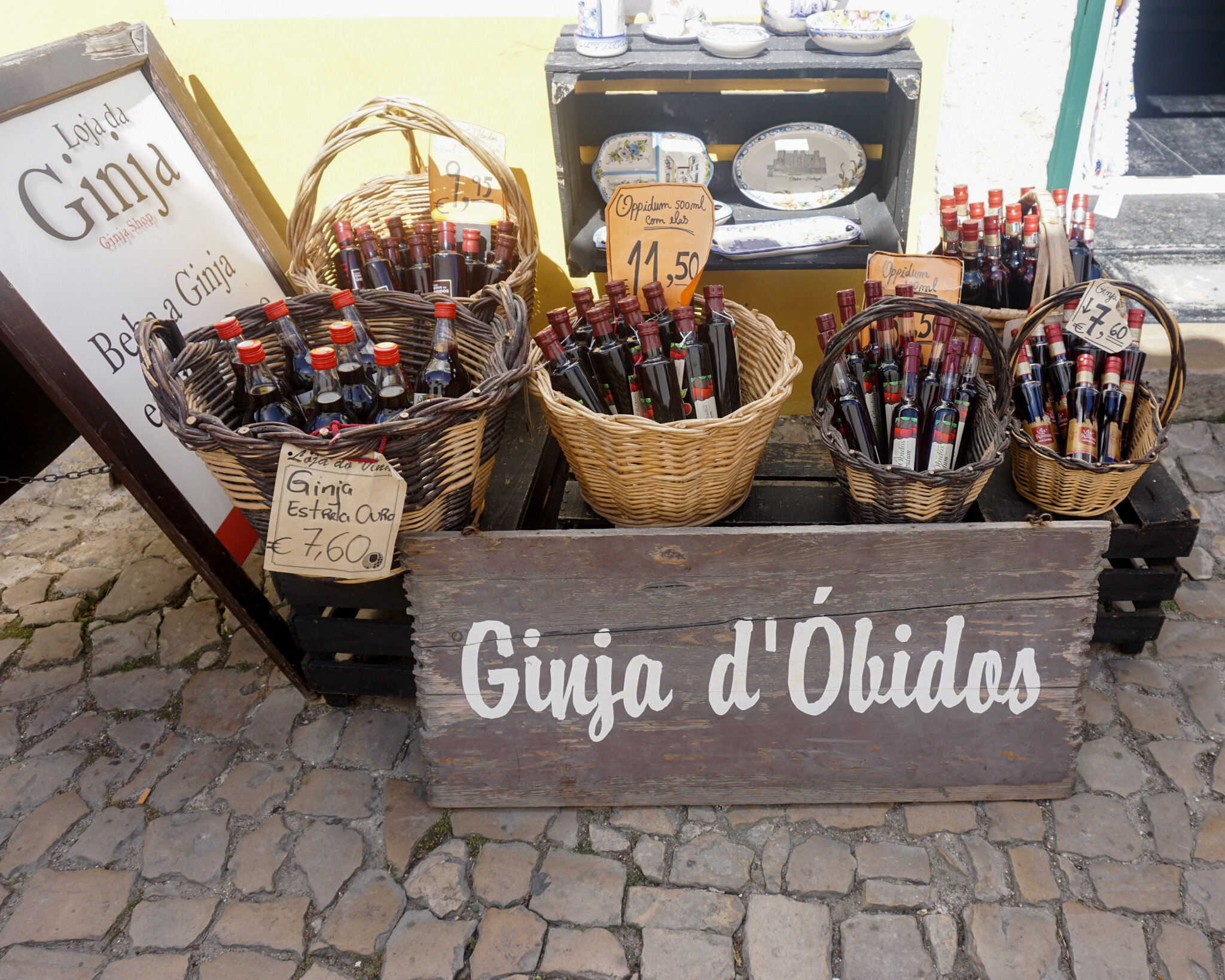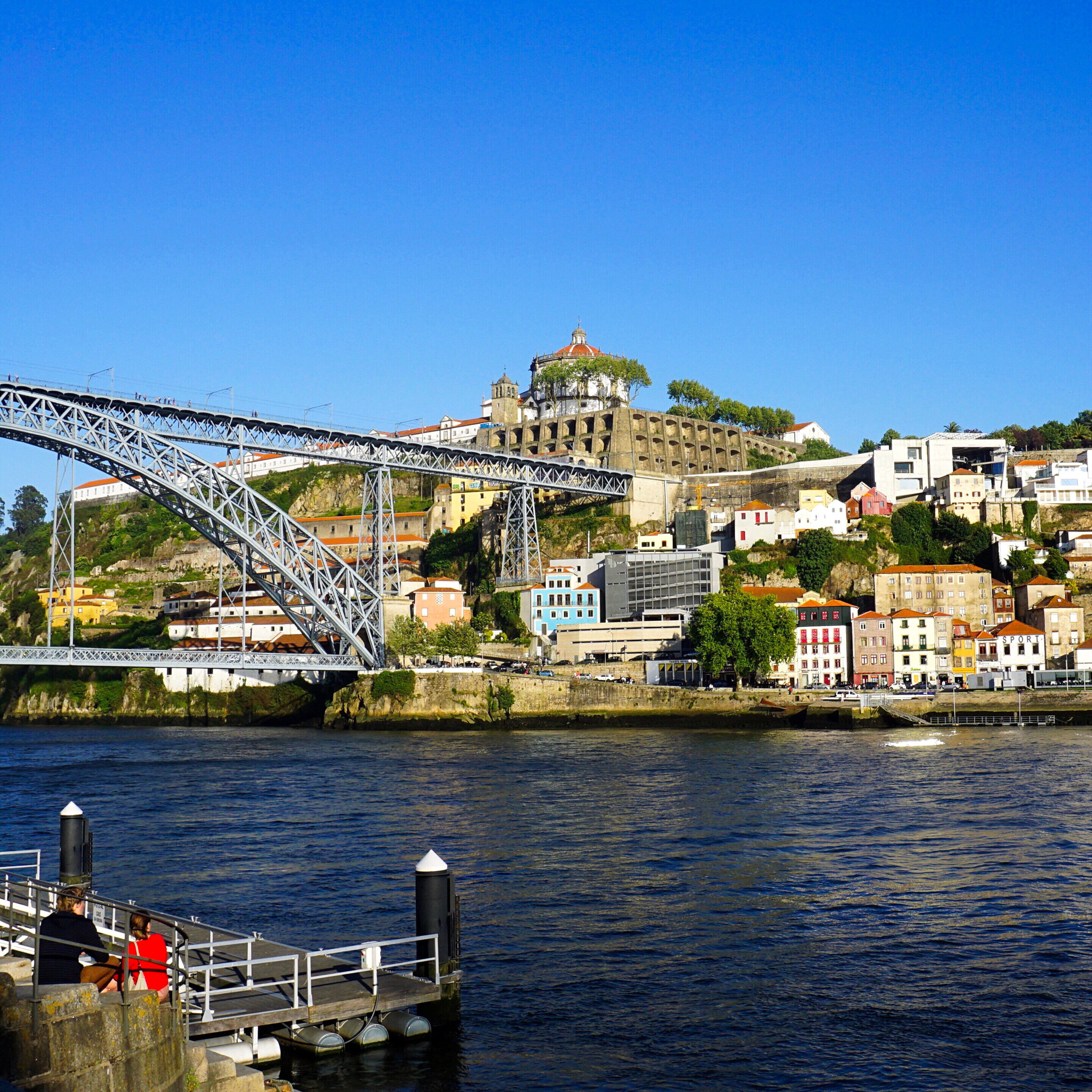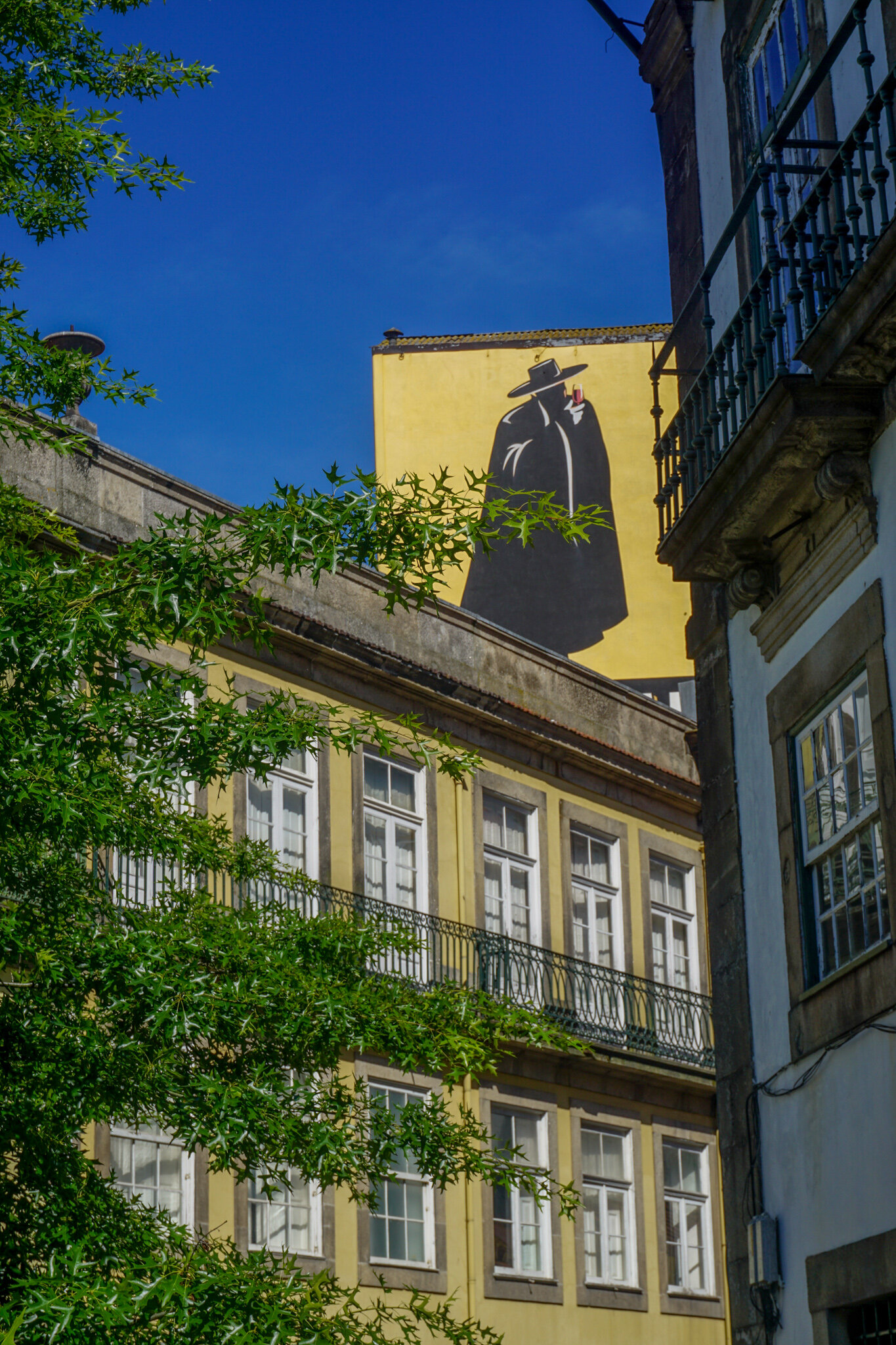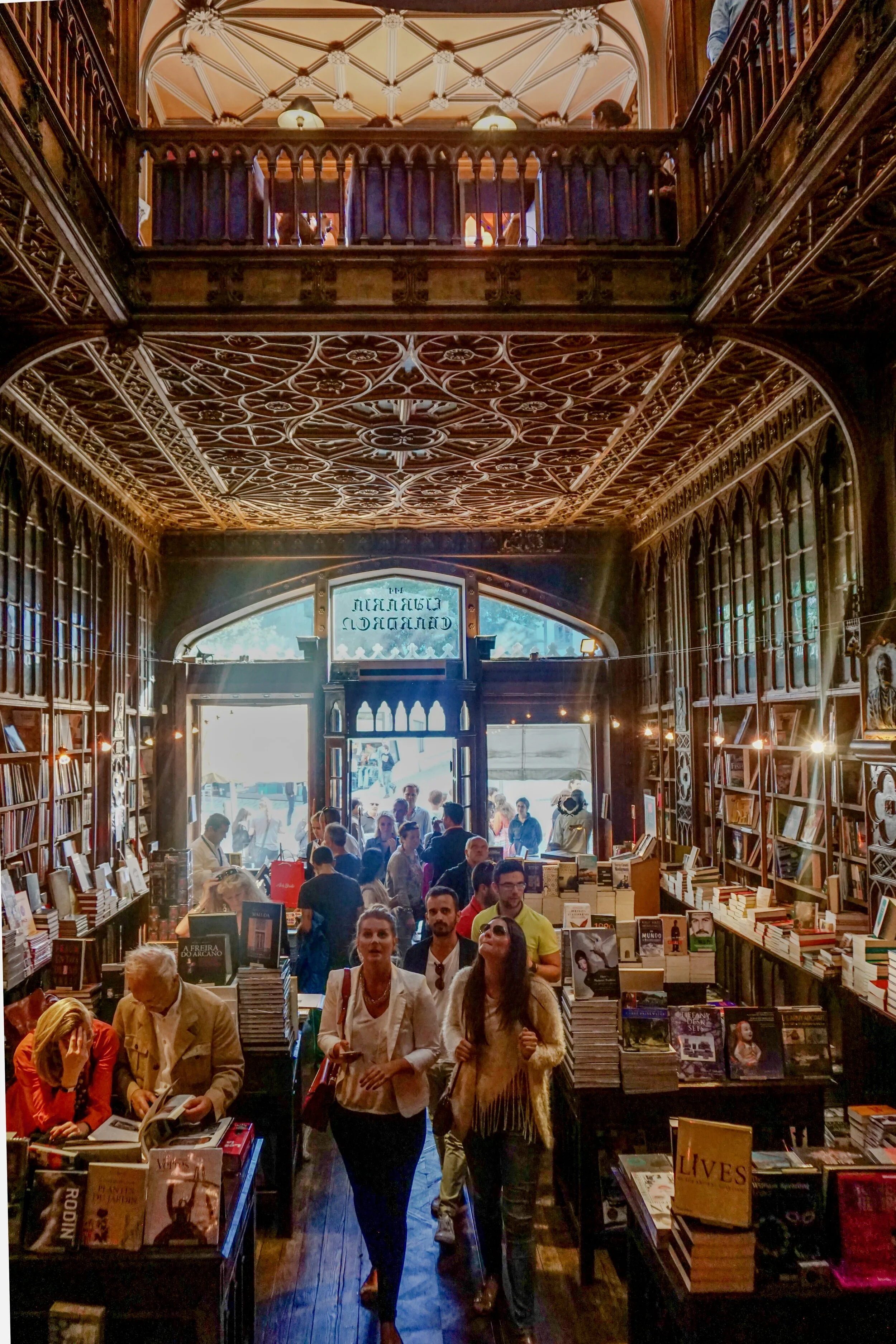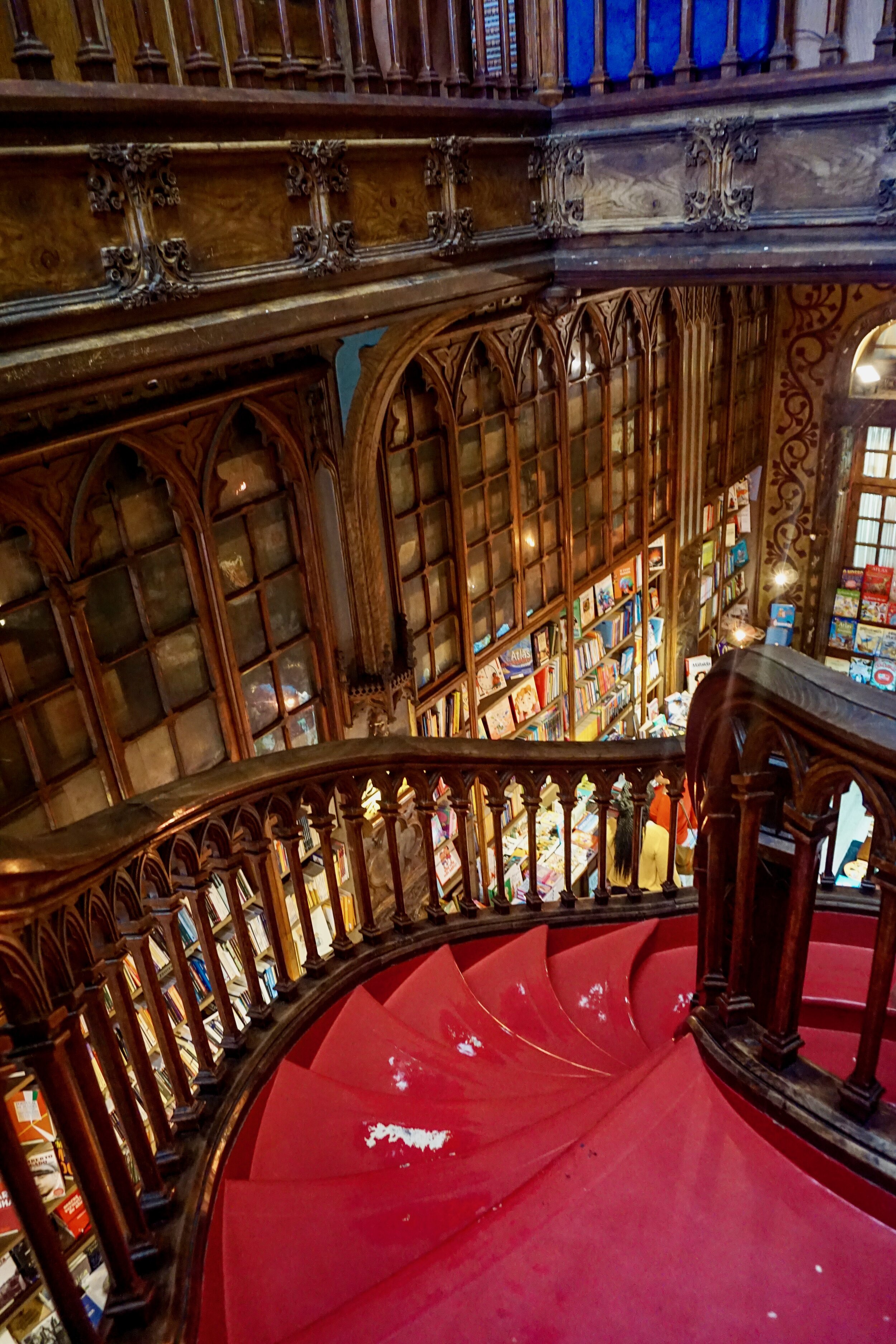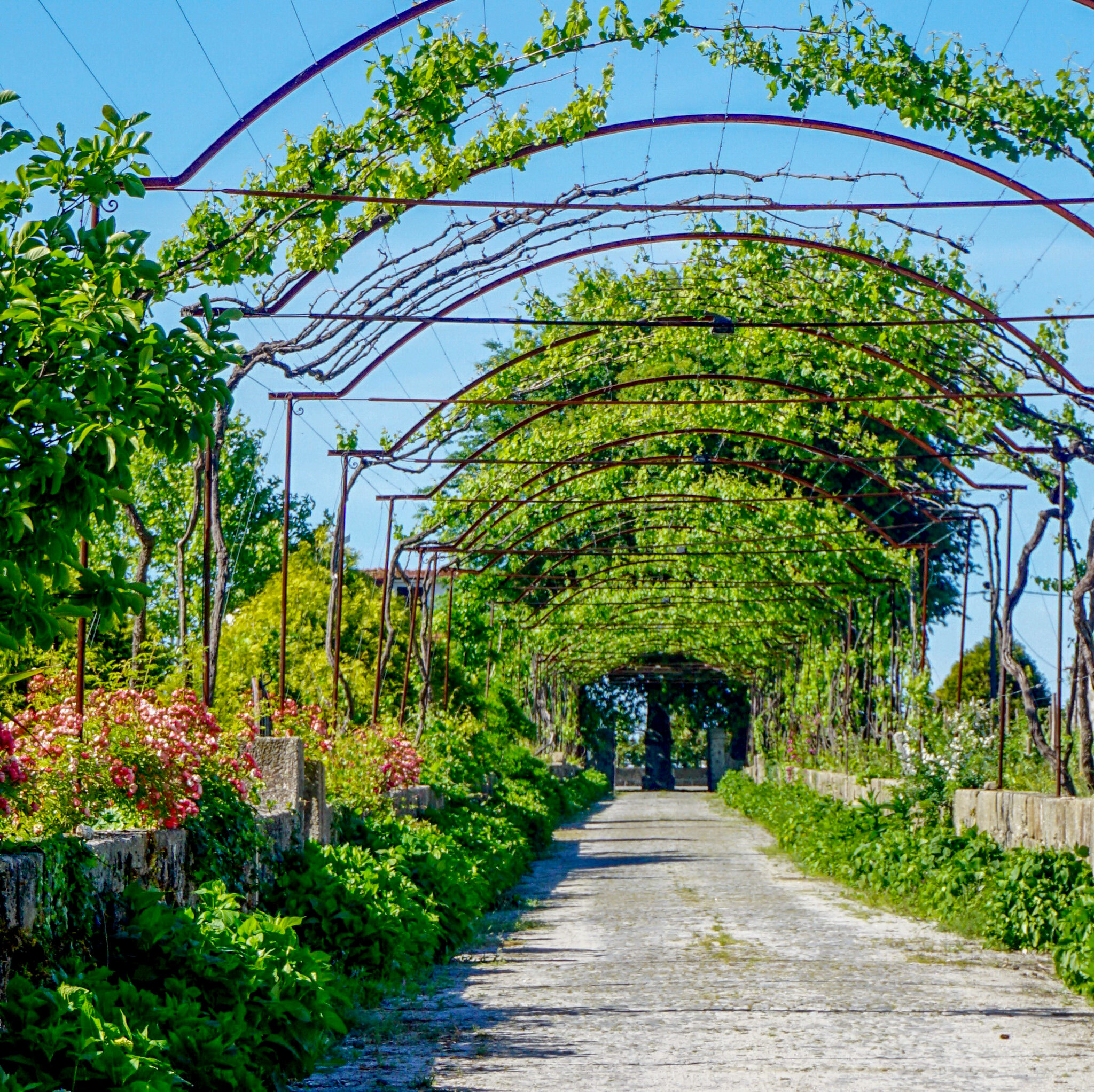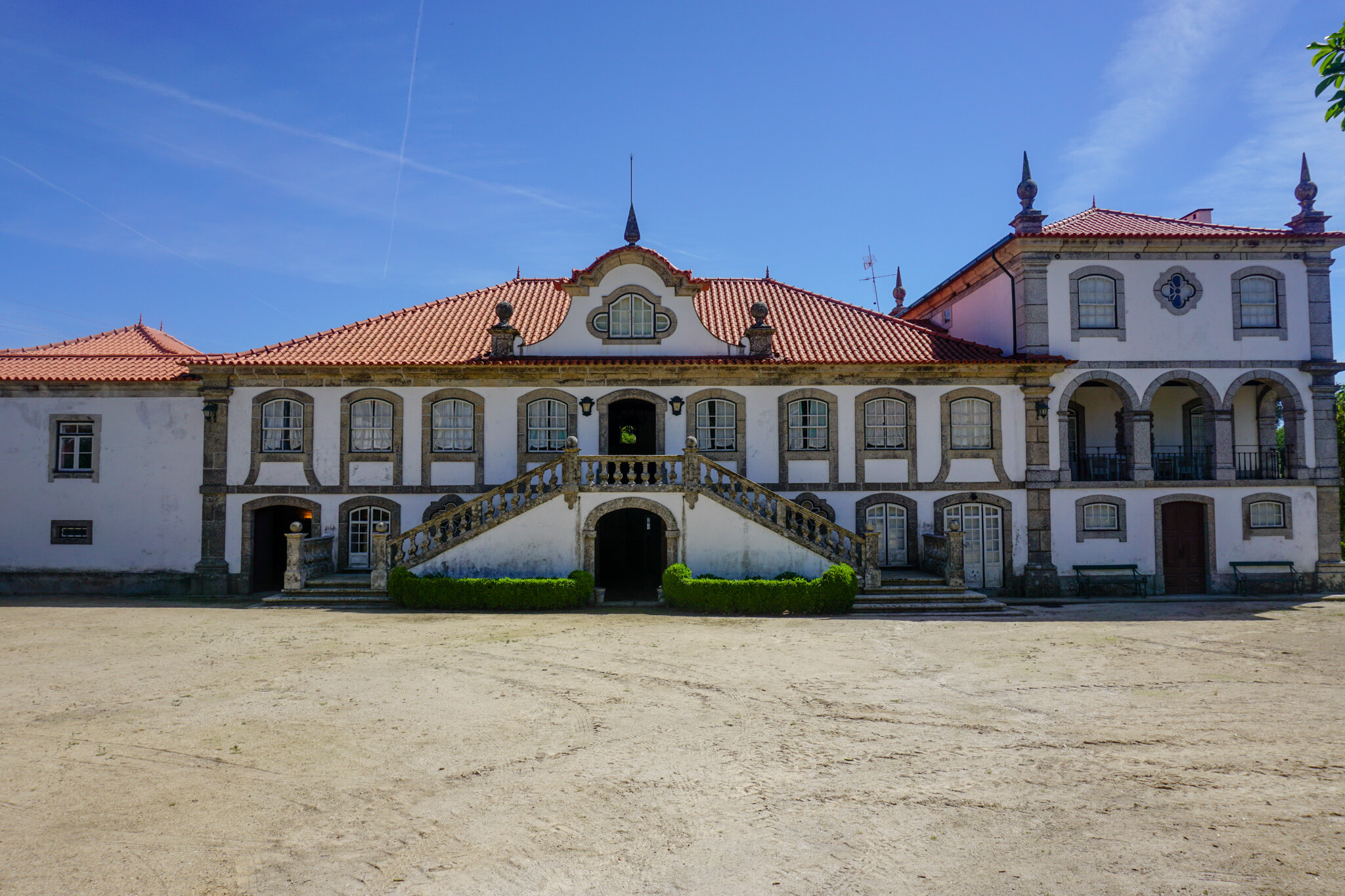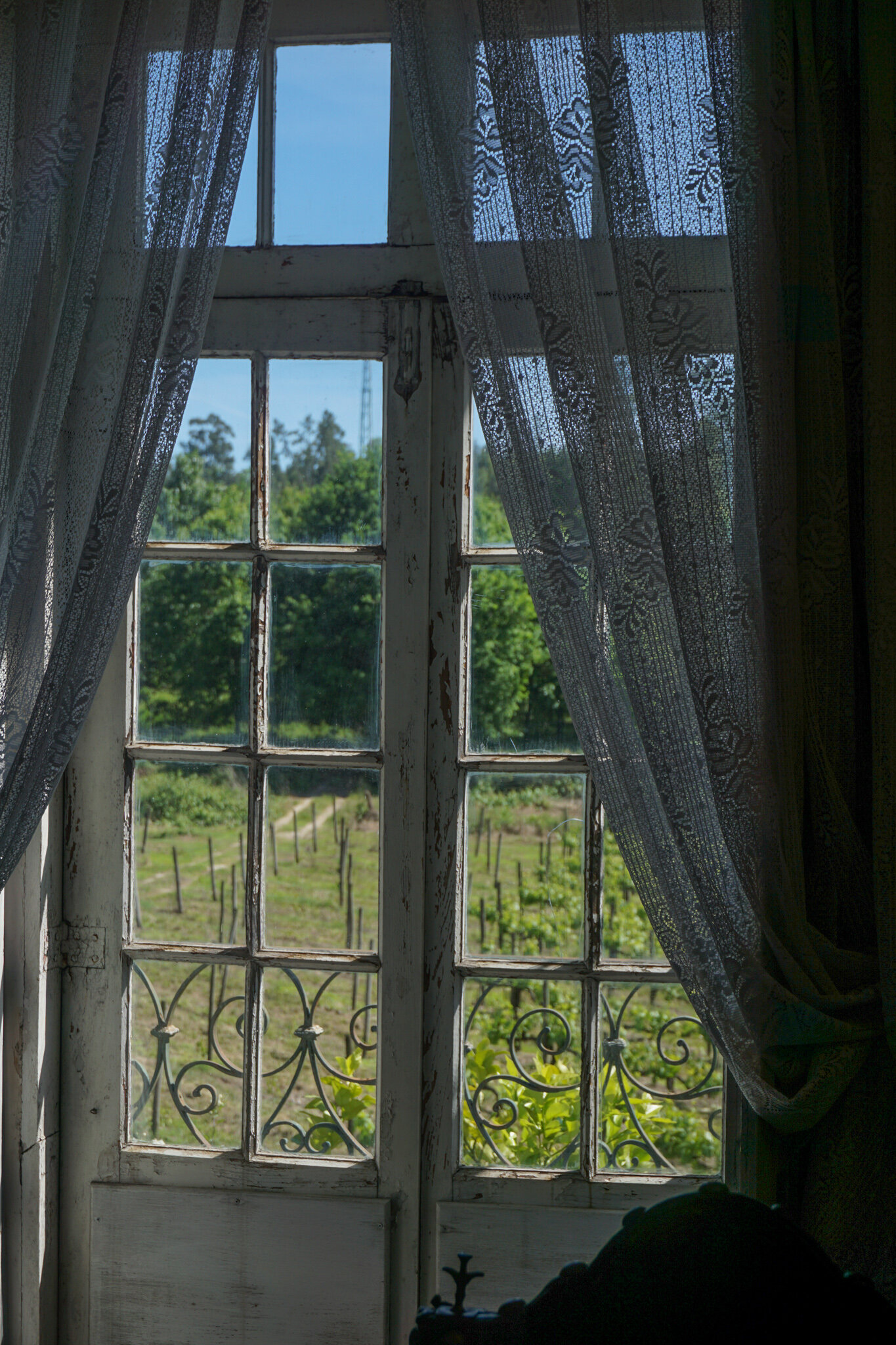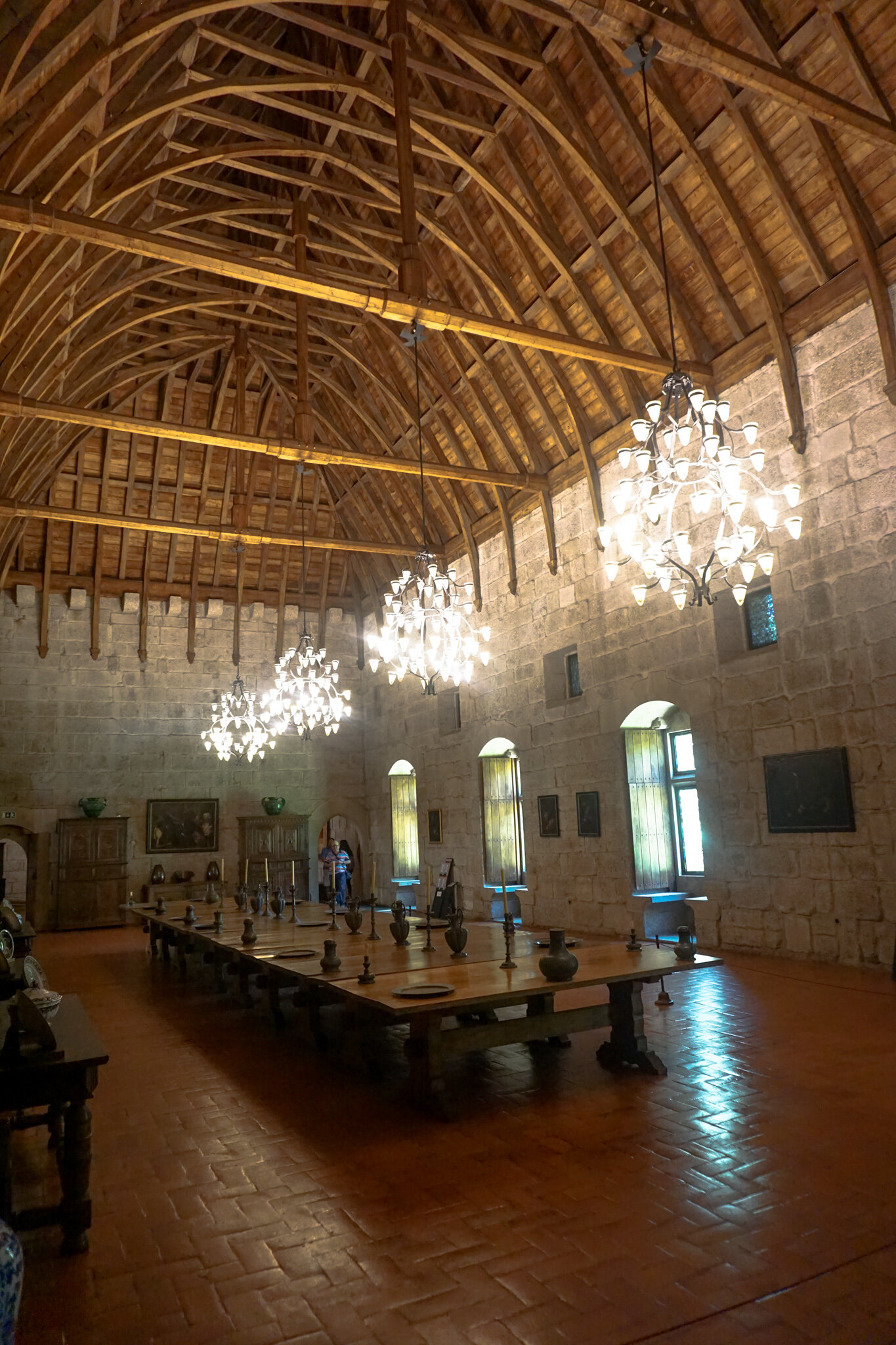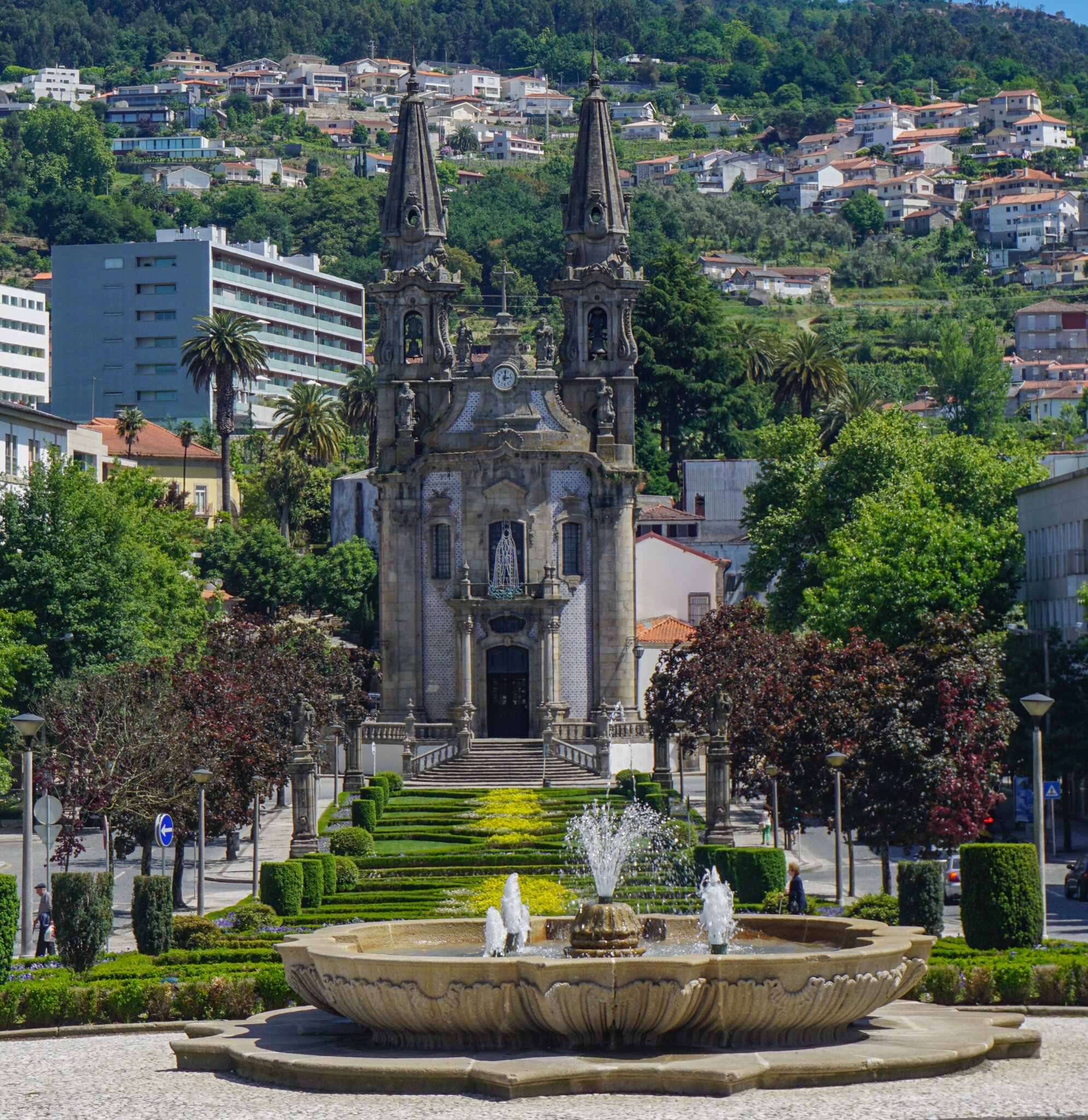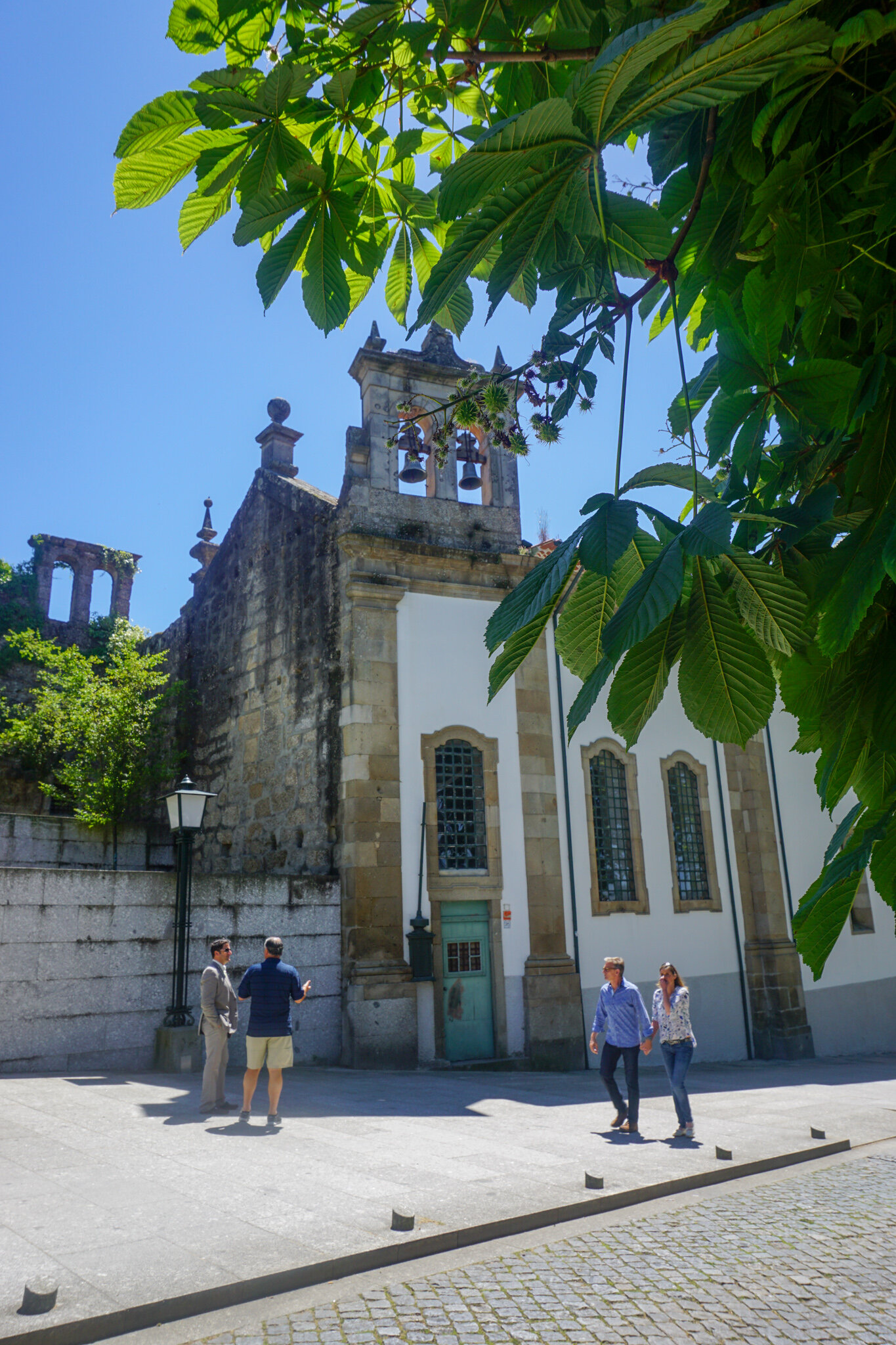Portugal: Travel Guide
Portugal is…
Seafaring history, hillside castles, medieval churches, colorful tiled buildings, surfing and beaches, famous port houses, and the majestic Douro River. Portugal was once a maritime nation, which at one point in time ruled half of the "New World," and now, finally, the world is uncovering its old-world charm.
A perfect place to start your Portugal discovery is Lisbon.
Lisbon is one of my favorite European cities with pastel-colored and uniquely tiled buildings adding to the character. A capital city not homogenized by global brand names also adds to its charms. The history will intrigue, and the views will delight.
The city is built on hillsides extending down to the bay, and it enchants you with water views at almost at every turn. A bit like San Francisco in that regard, and the Vasco da Game suspension bridge which crosses the Tagus River adds to the similarity. The graffiti-covered cable cars will get you across the city and a great way to explore its neighborhoods. Tram 28 will take you across town to explore the Monastery of São Vicente de and the Castle of S. Jorge. The Alfama area, just up from the castle, is another area to explore in the evening. The narrow lantern-lit streets are filled with bars and restaurants.
Traversing the cobblestone streets, you'll find a lively café culture and a buzzing nightlife. The Bairro Alto area is the older part of town, which has a great nightlife scene as restaurants spill out onto the streets. We found the best wine and tapas bars in this area;
Near the waterfront is Mercado da Ribeira, with 40 restaurants filling the stalls, it's an excellent stop for lunch. Save some room for a special treat at Lisbon's famous Pastéis de Belém, the best handmade pastries filled with custard cream. Now that you are fortified catch these nearby sites;
Jerónimos Monastery, which houses Vasco de Gama's tomb
Monument to the Explorers
Tower of Belem
TO STAY:
This is a wonderful hotel with a fantastic location. Their rooftop terrace bar has great views and perfect for a glass of wine.
TO EAT:
Chiado Area
Belcanto – If you are going to splurge on a dinner one night, check out the talented Lisbon-based Chef Jose Avillez; he won his second Michelin star here.
For lovely day trip from Lisbon to Sintra and the Pena Palace shown above, check out this tour on Get Your Guide.
Road tripping between Lisbon and Porto uncovers some interesting stops each town unique in its offering;
Sintra - hilltop 19th-century palace with vibrant colors
Obidos – charming hill town famous for its sweet cherry liquor
Nazare – surfers mecca and famous for women who wear skirts with seven petticoats
Coimbra – the oldest university in Europe
Aveiro – canals traversed by Barcos Moliceiros (boats) and famous for its Ovos Moles de Aveiro dessert
Porto (Oporto):
Porto (Oporto) is split by the Douro River with all of the famous Port Houses on one side and the beautiful old town on the other. You will find both medieval and baroque architecture styles and inside the churches, some elaborate gilt work with alters covered in gold.
Porto's fame and fortune is tied to the production of Port wine tracing back to the 17th century. Trade wars between the English and the French pushed English wine merchants to source wines from Portugal. The dark and astringent wines of the Douro Valley were shipped to England from Porto on long sea voyages. Port wine shippers, of English and Dutch origin, evolved the Port wine industry. A visit to any of the Port cellars in Porto or Douro will reveal English and Dutch heritage with names like; Graham's, Churchills, Croft, and Niepoort. Many of the current owners are fifth or sixth generation from the same shippers who began these Port houses.
In recent history, Harry Potter fans flock to Porto to see the library where JK Rowling worked. Throughout the town, you can pick up some of the medieval influences which were brought to life in the book series.
TO EAT:
My memories of Porto are in terms of the food. I love Octopus, and wherever I travel, if it's on the menu, I'll try it. I still dream of the dish I had at Adega s Nicolau in the old town; it was crispy grilled outside yet so tender on the inside - perfection.
If you love cheese, you must try a Francesinha, a ham sandwich covered with melted cheese. All I can say is I don't want to know how many calories make up this deliciousness. All over Portugal, seafood is the dominant cuisine, particularly the meaty white fish bacalao (cod). The white Vinho Verde wine, with its high acidity, makes it an ideal for pairing with all forms of seafood, and it's definitely a bargain.
You can explore the Vinho Verde (Minho) wine region by day-tripping from Porto. No the wines aren't green; the name of the region depicts the green landscape and the fact that they produce young wines. The white wines produced in this region tend to be light, crisp, and refreshing. You will also find some Vinho Verde with a little pétillance (fizz). This region extends to the Portuguese-Spanish border, you might find some similarity with Albariño, they virtually share the same grape known in Portugal as Alvarinho.
A pleasant stop in the region is the town of Guimarães, which has significant historical importance as it is considered to be the birthplace of Portugal. For decades it was the capital of the country and is now a UNESCO World Heritage Site. The castle is well preserved and well worth a stop to gain a perspective on Portuguese history.
Many are starting to realize Portugal has more to offer than just Port wine, and with the increasing wine quality, it should be on your wine travel list. For a deep dive into two of Portugal's Wine Regions;
With so much history to uncover, and such a wide variety of wines, I'd put Portugal as a top travel and wine destination.


